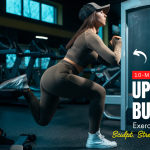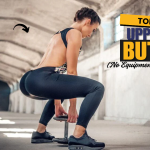Forget the gym – your body is the only machine you need. Whether you’re stuck at home, traveling, or just prefer bodyweight training, you can build a stronger, more defined chest without any equipment. With smart technique, controlled reps, and consistency, you’ll start to see serious results – no bench, dumbbells, or fancy machines required.
In this guide, we’ll cover 10 powerful chest exercises that target your pectorals from multiple angles — all without a single piece of gym equipment. Plus, we’ll include pro tips to maximize results and avoid plateaus. Let’s dive in.
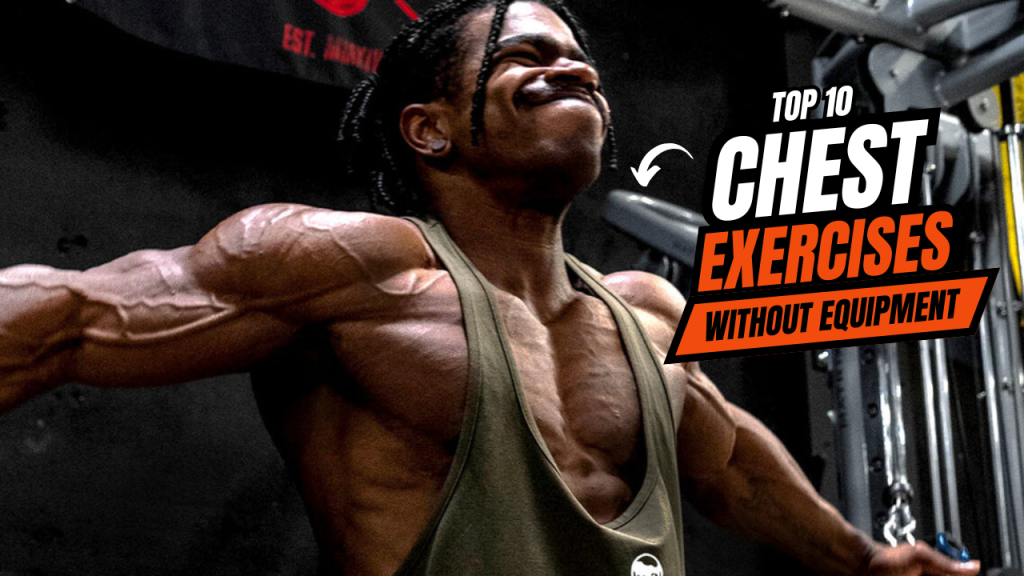
Table of Contents
Perks of Chest Exercises Without Equipment
- Zero Equipment Needed
- Train anytime, anywhere—no gym or gear required.
- Cost-Effective
- Save money on gym memberships and equipment.
- Build Functional Strength
- Mimics real-world pushing movements for better daily performance.
- Improves Core Stability
- Most chest exercises also activate your abs and lower back.
- Reduces Injury Risk
- Bodyweight movements are joint-friendly compared to heavy weights.
- Improves Muscle Endurance
- Boosts stamina along with muscle size and strength.
- Scalable for All Levels
- Easily modify exercises to match your fitness level (beginner to advanced).
- Better Mind-Muscle Connection
- Slower, controlled reps allow you to focus on chest engagement.
- Boosts Cardiovascular Health
- Compound movements like explosive push-ups get your heart rate up.
- Improves Mobility and Flexibility
Encourages better range of motion and posture over time.
Do’s and Don’ts of Chest Workouts Without Equipment
| Do’s | Don’ts |
|---|---|
| Maintain proper push-up form (flat back, tight core) | Let your hips sag or pike during exercises |
| Start with beginner variations if needed | Jump into advanced moves without building base strength |
| Focus on slow, controlled reps | Rush through reps with poor form |
| Breathe properly – inhale down, exhale up | Hold your breath during movements |
| Engage your chest actively in each rep | Let shoulders or triceps take over completely |
| Progress by increasing reps, sets, or variations | Stick to the same workout with no changes |
| Rest 48 hours between chest-focused sessions | Overtrain the chest daily without recovery |
| Warm up before and stretch after training | Skip warm-ups or cool-downs |
| Keep wrists aligned under shoulders in push-ups | Place hands too far forward or wide without control |
| Stay consistent and track your progress | Expect overnight results without effort |
What Can Happen After 30 Days of Exercises
| Area | Expected Results After 30 Days |
|---|---|
| Chest Definition | Noticeable muscle tone and firmer upper body |
| Upper Body Strength | Improved push-up performance and overall strength |
| Endurance | Ability to perform more reps with less fatigue |
| Posture | Better posture due to stronger chest and back balance |
| Core Stability | Tighter midsection and enhanced body control |
| Joint Health | Increased shoulder mobility and reduced stiffness |
| Confidence | Boost in self-esteem from visible progress |
| Workout Discipline | Consistent routine builds a habit and mental resilience |
| Fat Loss (if combined with diet) | Slight reduction in body fat and more lean muscle appearance |
| Energy Levels | Elevated energy and motivation throughout the day |
Why Train Chest Without Equipment?
Before jumping into the exercises, here’s why bodyweight chest training is worth it:
- Accessibility – Train anywhere, anytime.
- Improved Functional Strength – Push movements mimic daily tasks.
- Joint-Friendly – Less stress on shoulders and elbows.
- Core Activation – Most bodyweight chest exercises also engage your abs.
- Scalability – You can increase intensity by adjusting angles or tempo.
Top 10 Chest Exercises Without Equipment
1. Standard Push-Up

Primary focus: Middle Chest
This classic move builds foundational chest strength.
How to do it:
- Hands shoulder-width apart
- Elbows at a 45-degree angle
- Lower your chest to just above the ground
- Push back to the starting position
Pro tip: Maintain a tight core throughout to protect your lower back.
2. Wide Push-Up

Primary focus: Outer chest
Placing your hands wider increases chest muscle engagement.
Form keys:
- Hands 1.5x shoulder-width
- The chest should dip deeper than in a standard push-up
- Control the lowering phase for maximum tension
Tip: This is great for building a broader chest.
3. Diamond Push-Up

Primary focus: Inner chest and triceps
Hands close together forming a diamond shape under the chest.
Targets: Inner chest, triceps, and core stability.
Tip: Keep elbows tucked and avoid flaring out. It’s tough but effective.
4. Incline Push-Up (Hands Elevated)

Primary focus: Lower chest
Elevate your hands on a surface like a chair or low table.
Why it works: The incline shifts more load to the lower chest.
Pro tip: Go slow on the downward phase to increase muscle time under tension.
5. Decline Push-Up (Feet Elevated)
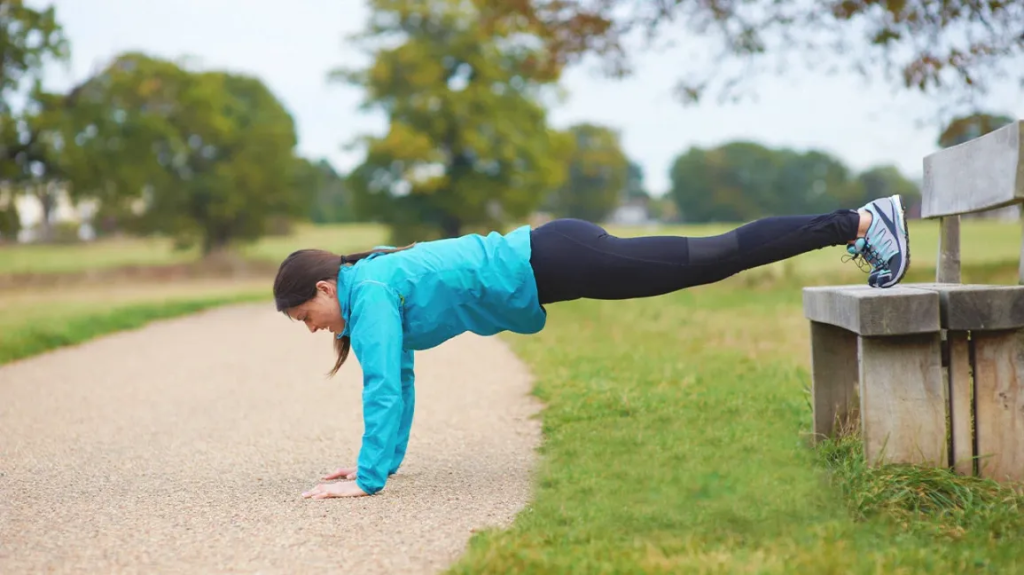
Primary focus: Upper chest
With feet elevated, the chest angle mimics an incline bench press.
Execution:
- Feet on a chair/bench
- Hands-on the ground
- Lower chest to floor, push up
Variation idea: The higher your feet, the harder the move.
6. Archer Push-Up
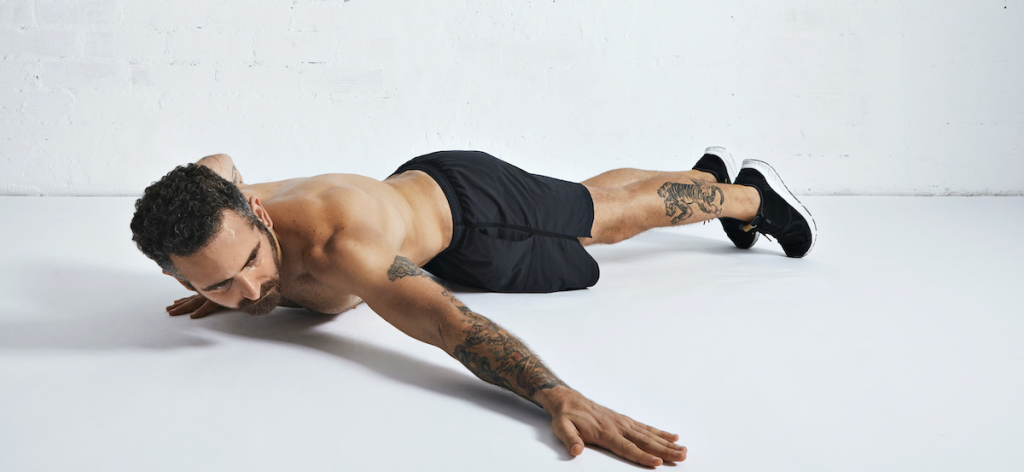
Primary focus: Unilateral chest strength
Like a one-arm push-up, but with support.
How to:
- Start wide
- Shift body weight from side to side
- One arm does most of the work
Bonus: It builds shoulder stability and helps prep for full one-arm push-ups.
7. Explosive (Clap) Push-Up
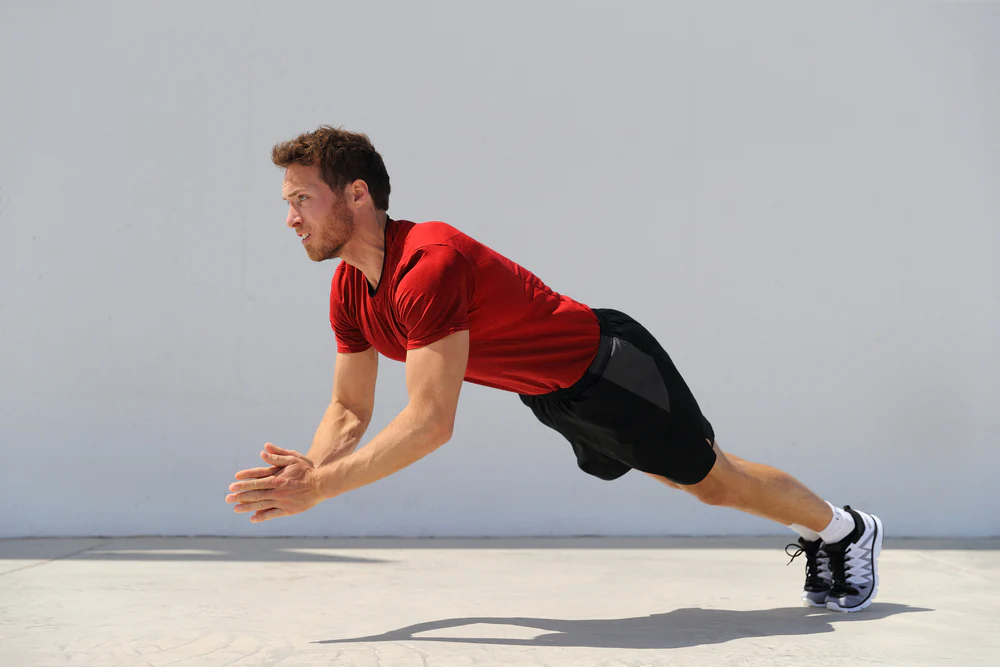
Primary focus: Power and fast-twitch fibers
Great for muscle explosiveness and aesthetics.
Tips:
- Push hard enough to lift off the ground
- Clap mid-air
- Land softly
Caution: Land with soft elbows to avoid joint strain.
8. Sphinx Push-Up

Primary focus: Chest, shoulders, and triceps
A unique movement transitioning from forearms to extended arms.
How to:
- Start in a forearm plank
- Push up until arms are fully extended
- Lower slowly back down
Note: Surprisingly effective for chest and arm development.
9. Slow Tempo Push-Up
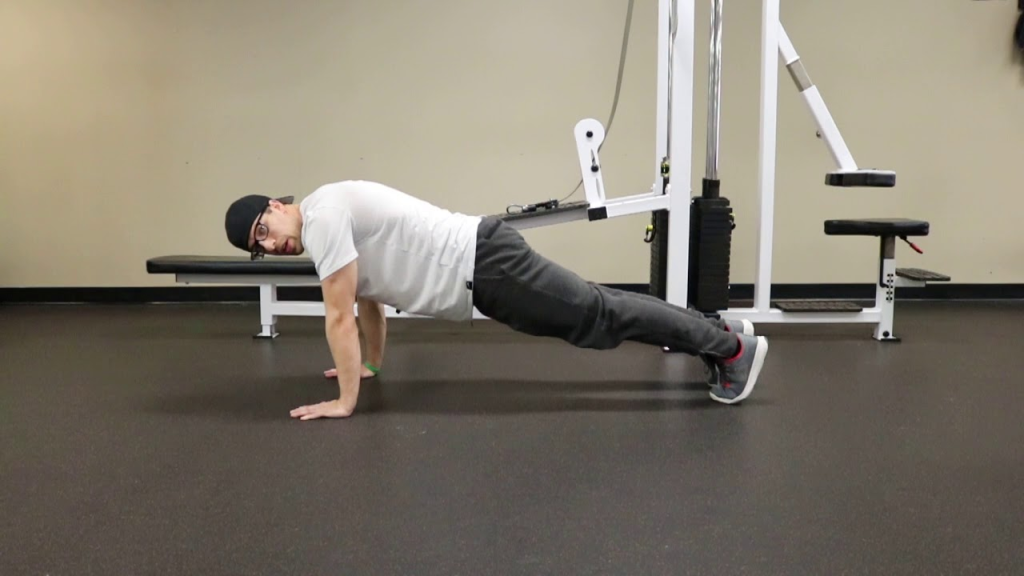
Primary focus: All-around chest development with increased time-under-tension
Execution:
- 4 seconds down, 2 seconds hold at the bottom, 2 seconds up
- Full range of motion
- Keep core engaged
Why it works: It creates more microtears in the muscle fibers = more growth.
10. Push-Up Hold (Isometric)

Primary focus: Endurance and muscle fiber activation
Hold yourself in the bottom position of a push-up.
How to:
- Lower until the chest is an inch from the ground
- Hold for 15–30 seconds
- Engage your chest, arms, and abs
Challenge mode: Combine with other push-up styles for supersets.
1-Week Chest Exercise Plan (No Equipment Needed)
| Day | Workout Focus | Exercises |
|---|---|---|
| Day 1 | Chest + Core Foundation | – Standard Push-Ups (3 sets of 12–15) – Plank to Push-Up (3 sets of 10) – Forearm Plank (3 x 30 sec) |
| Day 2 | Rest / Active Recovery | – Light stretching or walking – Chest-opening mobility drills |
| Day 3 | Chest Strength Builder | – Wide Push-Ups (3 sets of 10–12) – Diamond Push-Ups (3 sets of 8–10) – Slow Negatives (3 sets of 6) |
| Day 4 | Core + Stability | – Push-Up Hold (3 x 20 sec) – Plank Shoulder Taps (3 sets of 15) – Leg Raises (3 x 15) |
| Day 5 | Chest Power & Explosiveness | – Explosive Push-Ups (3 sets of 6–8) – Incline Push-Ups (feet on floor, hands elevated) (3 x 12) – Arm Circles (3 x 30 sec) |
| Day 6 | Active Recovery + Flexibility | – Dynamic stretching – Yoga or chest-focused mobility work |
| Day 7 | Full Chest Burnout (Endurance + Pump) | – Push-Up Ladder (1 rep up to 10 reps, then back down) – Wall Push-Ups (3 sets of 20) – Plank Finisher (60 sec) |
Notes:
- Rest 30–60 seconds between sets.
- Adjust reps based on your fitness level.
- Stretch after every session to boost recovery.
- For faster results, pair with proper hydration and a high-protein diet.
Bonus Tips to Build Chest Muscle Faster
To make these exercises more effective, follow these training principles:
- Progressive Overload: Increase reps, and sets, or decrease rest time weekly.
- Perfect Form: Quality over quantity. Sloppy push-ups won’t grow muscle.
- Recovery Matters: Train chest 2–3x/week max. Rest is where growth happens.
- Nutrition: Eat enough protein (1.6–2.2g/kg of body weight) to support muscle growth.
- Track Progress: Log reps and sets. Aim to improve each week.
Final Thoughts
You don’t need a gym membership to carve out a powerful chest. These 10 bodyweight exercises, when performed with consistency, intensity, and proper form, are more than enough to build real muscle right at home.
Train smart. Stay consistent. And watch your chest transform.
Frequently Asked Questions (FAQs)
Can I really build chest muscle without equipment?
Yes! Bodyweight exercises like push-ups, especially with variations like decline, wide, and diamond push-ups, are highly effective for building chest muscle. The key is consistency, progressive overload, and proper form.
How often should I do chest exercises at home?
For optimal results, aim to train your chest 2–3 times per week, allowing at least one rest day between sessions to promote muscle recovery and growth.
How long does it take to see results from bodyweight chest workouts?
Results vary, but with a solid routine and proper nutrition, many people begin to see muscle definition and strength improvements within 4–6 weeks.
Do push-ups alone build a big chest?
Push-ups are excellent for chest development, but variety matters. Incorporating different push-up types (incline, decline, wide, etc.) and manipulating tempo can lead to more balanced and bigger chest gains.
Do I need to combine chest workouts with other muscle groups?
For balanced strength and aesthetics, yes. Combine chest workouts with back, shoulders, legs, and core training in a full-body plan. This also helps prevent muscle imbalances.
Is it normal for my shoulders or triceps to feel sore after push-ups?
Yes, push-ups engage the shoulders and triceps along with the chest. Some soreness is normal, especially if you’re new to training or trying new variations. Ensure proper form to avoid overloading joints.
Are home chest workouts good for beginners?
Absolutely! Beginners can start with basic push-up variations and gradually increase difficulty. Always prioritize form and control over speed or quantity.
Should I stretch after chest workouts?
Yes, stretching helps improve flexibility, reduce soreness, and speed up recovery. Focus on chest openers and shoulder mobility stretches post-workout.




